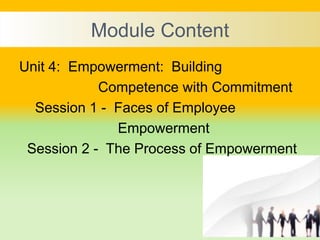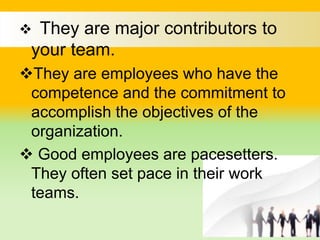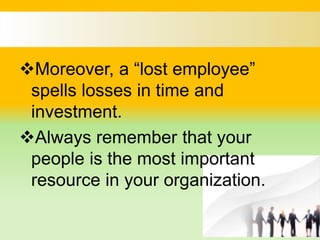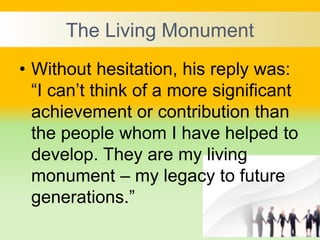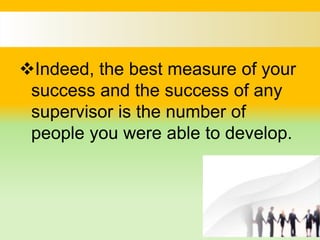This document discusses how to develop peak performance in employees. It begins by debunking common assumptions that equate things like experience, speed, hours worked, and compliance with being a good employee. True high performers are those with competence and commitment to goals. The document also discusses learned helplessness and employee obsolescence, noting supervisors must prevent these by developing staff. When issues do arise, the best option is long-term investment in employee growth, rather than quick fixes like termination. Overall performance comes from empowering employees to continuously learn and improve.









